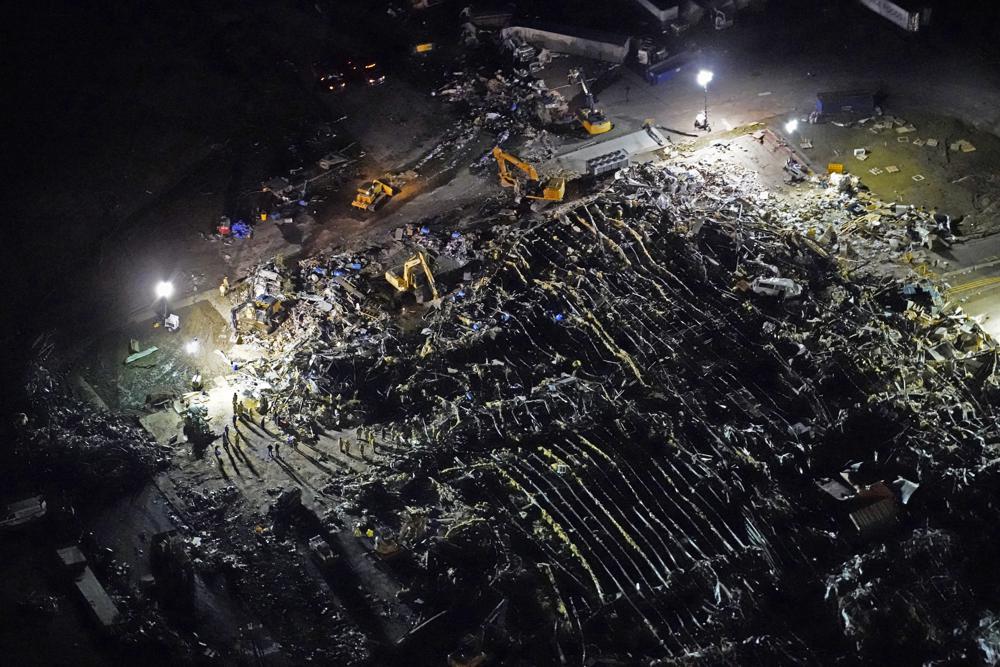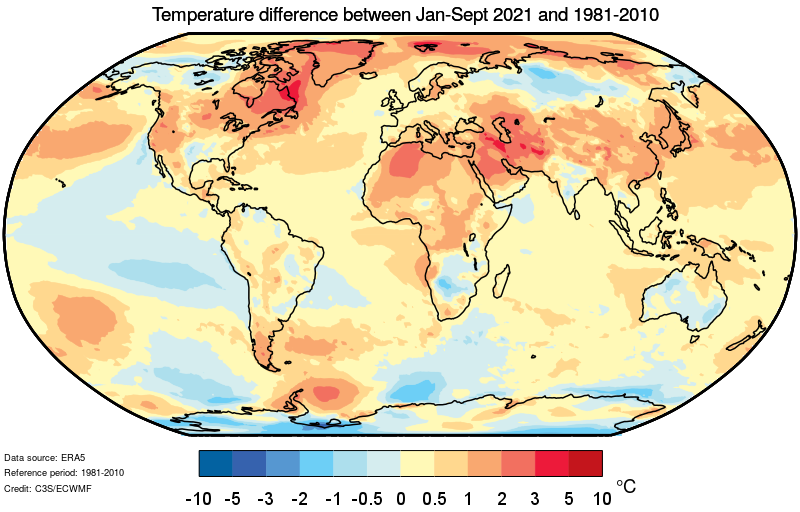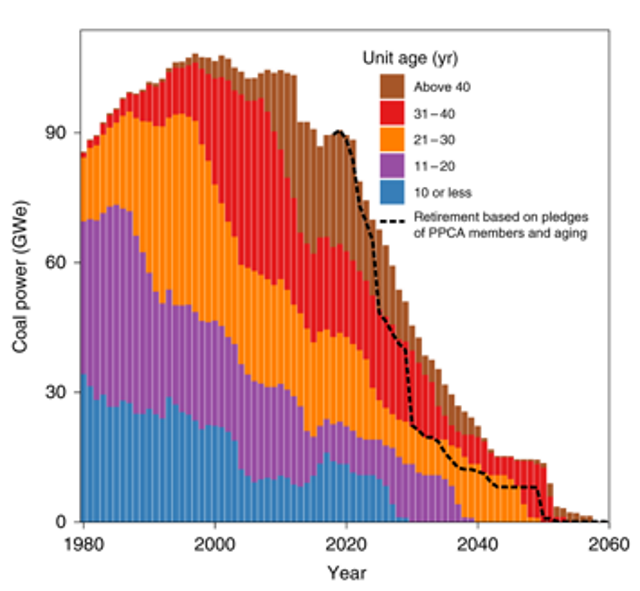Night of devastating tornadoes likely kills more than 100 in Kentucky – “The Mississippi River Valley and Ohio River Valley are increasingly vulnerable to more tornadic activity with time”

By Suman Naishadham and Seth Borenstein
12 December 2021
WASHINGTON (Associated Press) – The calendar said December but the warm moist air screamed of springtime. Add an eastbound storm front guided by a La Nina weather pattern into that mismatch and it spawned tornadoes that killed dozens over five U.S. states.
Tornadoes in December are unusual, but not unheard of. But the ferocity and path length of Friday night’s tornadoes likely put them in a category of their own, meteorologists say. One of the twisters — if it is confirmed to have been just one — likely broke a nearly 100-year-old record for how long a tornado stayed on the ground in a path of destruction, experts said.
“One word: remarkable; unbelievable would be another,” said Northern Illinois University meteorology professor Victor Gensini. “It was really a late spring type of setup in in the middle of December.”
Warm weather was a crucial ingredient in this tornado outbreak, but whether climate change is a factor is not quite as clear, meteorologists say.
Scientists say figuring out how climate change is affecting the frequency of tornadoes is complicated and their understanding is still evolving. But they do say the atmospheric conditions that give rise to such outbreaks are intensifying in the winter as the planet warms. And tornado alley is shifting farther east away from the Kansas-Oklahoma area and into states where Friday’s killers hit.
Here’s a look at what’s known about Friday’s tornado outbreak and the role of climate change in such weather events. […]
“The worst-case scenario happened. Warm air in the cold season, middle of the night,” said John Gordon, a National Weather Service meteorologist in Louisville, Kentucky. […]
“In order to get a really long path length, you have to have a really fast moving storm. This storm was moving well over 50 miles (80 kilometers) per hour for a majority of its life,” Gensini said. That’s not the speed of the winds, but of the overall storm movement.
“You’re talking about highway-speed storm motions,” Gensini said. […]
Scientists have observed changes taking place to the basic ingredients of a thunderstorm, however, as the planet warms. Gensini says in the aggregate, extreme storms are “becoming more common because we have a lot warmer air masses in the cool season that can support these types of severe weather outbreaks.”
The U.S. is likely to see more tornadoes occur in the winter, Brooks said, as national temperatures rise above the long-term average. Fewer events will take place in the summer, he said.
Furtado of the University of Oklahoma said tornado alley, a term used to describe where many twisters hit the U.S., has shifted eastward into the Mississippi River Valley. That shift is because of increases in temperature, moisture and shear.
“Bottom line: The people in the Mississippi River Valley and Ohio River Valley are becoming increasingly vulnerable to more tornadic activity with time,” he said. [more]
EXPLAINER: Was tornado outbreak related to climate change?
Night of devastating tornadoes likely kills more than 100 in Kentucky
By Cheney Orr
11 December 2021
MAYFIELD, Kentucky (Reuters) – At least 100 people were feared dead in Kentucky after a swarm of tornadoes tore a 200-mile path through the U.S. Midwest and South, demolishing homes, levelling businesses and setting off a scramble to find survivors beneath the rubble, officials said Saturday.
The powerful twisters, which weather forecasters say are unusual in cooler months, destroyed a candle factory and the fire and police stations in a small town in Kentucky, ripped through a nursing home in neighboring Missouri, and killed at least six workers at an Amazon warehouse in Illinois.
Kentucky Governor Andy Beshear said the collection of tornadoes was the most destructive in the state’s history. He said about 40 workers had been rescued at the candle factory in the city of Mayfield, which had about 110 people inside when it was reduced to a pile of rubble. It would be a “miracle” to find anyone else alive under the debris, Beshear said.
“The devastation is unlike anything I have seen in my life and I have trouble putting it into words,” Beshear said at a press conference. “It’s very likely going to be over 100 people lost here in Kentucky.” […]
Video and photos posted on social media showed brick buildings in downtown Mayfield flattened, with parked cars nearly buried under debris. The steeple on the historic Graves County courthouse was toppled and the nearby First United Methodist Church partially collapsed.
Mayfield Fire Chief Jeremy Creason, whose own station was destroyed, said the candle factory was diminished to a “pile of bent metal and steel and machinery” and that responders had to at times “crawl over casualties to get to live victims.” […]
The genesis of the tornado outbreak was a series of overnight thunderstorms, including a super cell storm that formed in northeast Arkansas. That storm moved from Arkansas and Missouri and into Tennessee and Kentucky.
Unusually high temperatures and humidity created the environment for such an extreme weather event at this time of year, said Victor Gensini, a professor in geographic and atmospheric sciences at Northern Illinois University.
“This is an historic, if not generational event,” Gensini said.
Saying the disaster was likely one of the largest tornado outbreaks in U.S. history, President Joe Biden on Saturday approved an emergency declaration for Kentucky.
He told reporters he would be asking the Environmental Protection Agency to examine what role climate change may have played in fuelling the storms, and he raised questions about the tornado warning systems. [more]
Night of devastating tornadoes likely kills more than 100 in Kentucky


